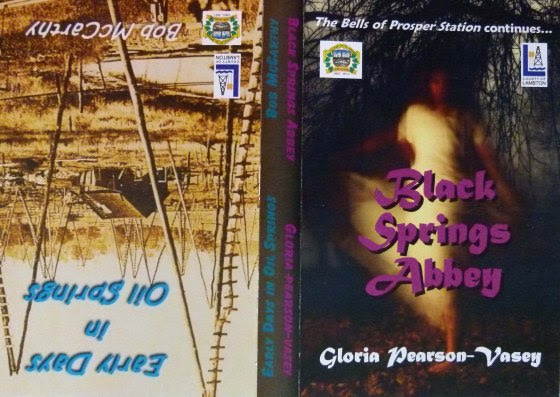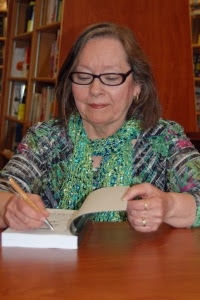The Anatomy of an Invention
By Jerry Jordison“Susan, I think I’ll go and soak in the bathtub for an hour or so while you watch the hockey game.” Rueben climbed the stairs to the bathroom and filled the tub with hot water. He added a blob of bubble bath, some Epsom salts, and slipped into his warm uterine-like cockpit. He soaped himself, submerged below the surface to just cover his ears, and closed his eyes to enjoy warmth and quiet. Muffled cheers of excitement occasionally
Rueben slowly emerged into consciousness realizing his bath water was tepid. He reached up with his toes to turn on the hot water, warming up his watery womb. These Saturday night baths were a form of empowerment for him. He looked forward to this time to allow his subconscious to emerge with ideas for his next art piece. Tonight he had the inspiration to paint knives falling out of holes in the sky to epitomize the holes in the ozone layer.
Rueben could still hear Susan involved in her hockey game as he softly opened his eyes. With no hurry to get up, he stared at the square pattern of tiles surrounding the tub. He was shocked to see the full tile pattern suspended in space. It looked real. He reached up with his finger and found he could touch the illusionary tiles. Well, not really touch them but touch the spot in space where the tiles appeared to be. Excited by his vision he wondered if it was a mystical experience or the beginning of eye problems.
He closed his eyes and reopened them. The image was gone. As he continued to stare at the tiles he felt his eyes soften and the tile illusion appeared again. Just then his wife called up to him, excited that the Leafs had won their game. Rueben acknowledged her as he got out of the tub and dried himself.
Wrapped in his housecoat he came downstairs, gave Susan a hug, and put a bag of popcorn in the microwave. He divided the popcorn into two bowls and gave her one, accompanied by a loving kiss.
“How was your bath tonight dear?”
“Great, I received another great idea for a painting. You know how the scientists are talking about holes in the ozone layer causing radiation to give us skin cancer? Well, I had this idea of painting knives, to represent the radiation, dropping from holes in the sky. I think it will turn out to be a great painting – as great as you are.” Saying this Rueben leaned over, extended his arm around her neck and cupped her bosom.
Giggling, she asked, “How do these ideas come to you, Rueben? Are you a psychic or just a sassy mystic?” She removed herself from his roaming hands to return the empty popcorn bowls to the kitchen.
“There was something else a little strange tonight as well,” he called out as she left the room.”
“I’m listening. What was it?”
“When I opened my eyes I stared at the bathroom tiles for a minute. All of a sudden I could see an exact duplication of the tiles in space, only smaller.”
“What are you talking about now? Maybe you should stop having those long baths. I’m starting to wonder about you.”
“It’s nothing to worry about, dear. However, I’m curious and want to explore it more. Let’s go to bed and do some exploring together.”
Rueben attempted to duplicate his visual experience several times during the week without success. It wasn’t until his next bath night he had a chance to really experiment with the image again. After relaxing in the warm water, he found it easy to create the image of the tiles in space. He played with it for quite some time. The next week he found it easier to bring the spatial image into focus. He had an idea.
“Susan can you come upstairs and bring the measuring tape, a pencil and paper?” Susan did as she was asked but gave Rueben a strange look. “What’s going on?
“You remember I told you I could see the bathroom tiles in space? I’m looking at them now and they are right here.” He pointed his figure to a spot in space. “Will you do me a favor and measure the distance from the wall to my finger and then from the wall to my eyes? Thanks. I’m going to move closer to the wall. Will you please take the measurements again? Now, I’ll move back as much as possible and have you measure one more time. I want to see if I can figure out the relationship between where I see the image and the distance my eyes are from the real thing.
“Are you sure there isn’t something wrong with your eyes? Maybe you should see an optometrist.”
“My eyes feel fine. I think I’ve stumbled onto something unique. Maybe scientists already know about it, but I want to do my own experimenting to see what I can discover. Thanks for doing the measurements. Now I’ll try and make a graph to see if I can come to any conclusions.”
He discovered that his vision of the tiles appeared between 50 to 60 percent from where the real tiles really were. Once he became use to seeing in that way, Rueben discovered the repeated pattern on wallpaper would produce the same results. Now, he could create the spatial image from any repetitive pattern. Every day he became more intrigued with the phenomenon.
Sitting in his bathtub laboratory again, he tried another experiment. He focused on the spatial image as if it were real and discovered he could see another image closer to his face but smaller in size. He began making notes of each discovery.
Because Rueben was a schoolteacher he decided to try drawing images on the black board and creating them in space. He noticed when the images were not identical the lines would project as angles either coming toward him or going away. This opened a whole new phase of discovery. He learned that if he drew two parallel lines he could create the image of one line in space. Two non-parallel lines resulted in the created line appearing at different angles. He became engrossed in his project and spent many hours experimenting.
Using his high school math he discovered how to calculate the distance of the 3D space image, as he now called it. He had to tell someone. That night he excitedly told his wife about his experiments and how he came up with an equation to determine the distance of the 3D space image.
“Susan I did it. I found an equation to determine the distance in space of the image I see. It’s y = xd/s+x, where y is the distance.”
“That’s nice Rueben. Slow down. I don’t know what you’re talking about, but I’m glad you got it all worked out.”
“Not only that, but I figured out by playing around with obtuse and right angel triangles, how to determine the length of the 3D space image and what angle it will appear in space. It’s z = x/Sinø. Cool eh!”
“You’re not listening dear. I don’t know an obtuse triangle from a wedge of cheese. And I certainly don’t remember any fancy math. I’m happy for you but I’m not really interested.”
Dejected, Rueben restrained his enthusiasm and sat down to watch television with Susan, engaging her in conversation about her day.
The next weeks resulted in new discoveries. There was a metal grid on the school windows to prevent the glass from breaking when children kicked a ball in that direction. He was excited that he could also create the 3D space image beyond the window grid. He checked his equations and found they would also predict the distance of the image in that dimension as well.
Reuben was sure he was going to become famous. ‘Who knows? Maybe the United States Space Department was looking for just such a discovery! Even Susan would be overcome with pride by his achievements and it would change their lives! Just one more minute detail remained. Just to be sure, he would have to research similar studies before he patented his incredible discovery.’
He was almost ready to quit in self-satisfaction when he was taken aback to find an article on the Internet about the ‘wallpaper effect’, discovered by Charles Wheatstone, a British scientist in 1838. He even came up with the same equation as his. ‘Well, no awards for me, but I did actually make a scientific discovery on my own. Susan will be impressed.’
“Honey, you know how I’ve been involved with that 3D image thing? Well, last night I discovered on the Internet a British scientist made the same discovery more than a hundred years ago, and came up with the same equations!”
“That’s amazing dear. Just think if you’d lived back in the eighteen hundreds you might have discovered it first and become famous. I’m proud of you, my little scientist.”
Susan embraced Rueben, their eyes met, a sly smile formed, and they headed off to the bedroom to see what else could be discovered.






